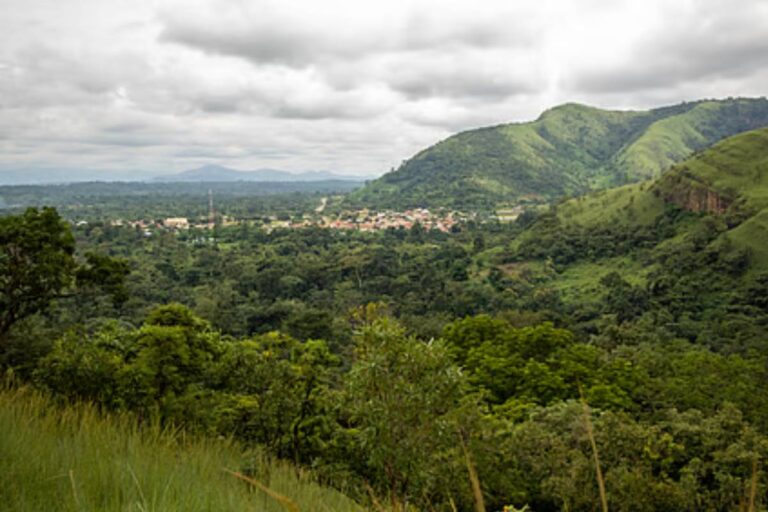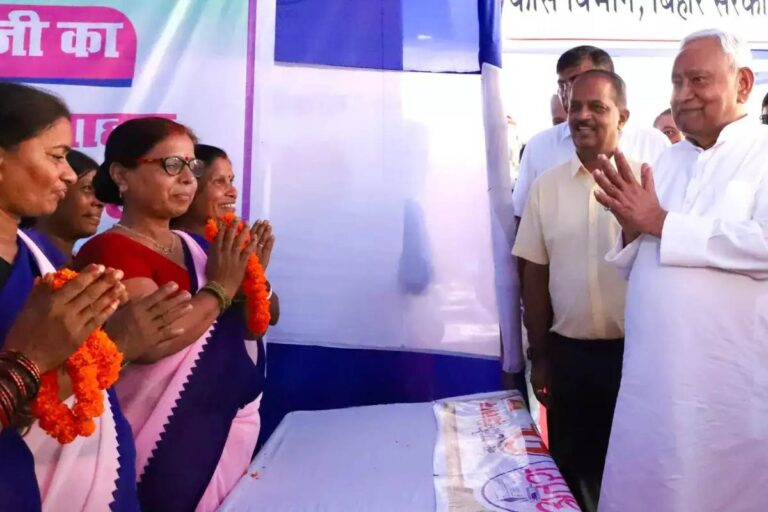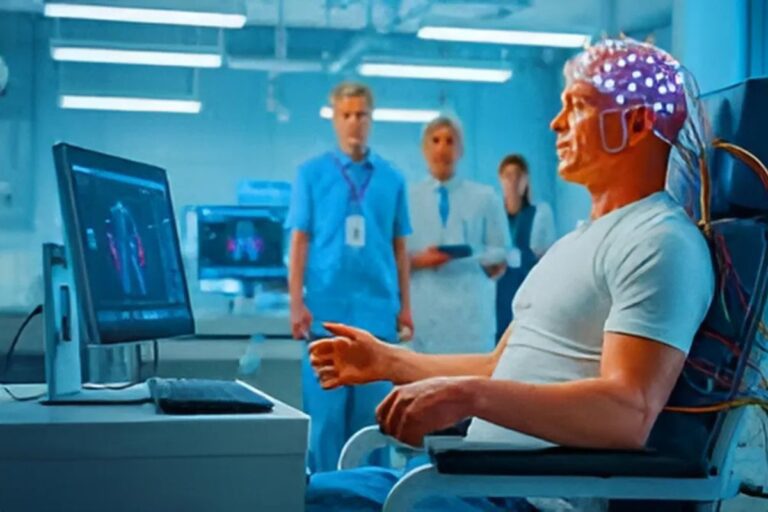Researchers at India’s top medical schools have found a key to beating drug-resistant fungal infections, which are one of the most dangerous enemies of medicine. The breakthrough will change the way doctors treat these dangerous diseases that kill thousands of people every year in the United States.
New Metabolic Targeting Strategy
The Indian Council of Medical Research (ICMR), along with IIT Madras and the Wadhwani School of Data Science and AI, has come up with what experts are calling a “one-of-a-kind” way to fight Candida albicans, a deadly fungus that causes systemic candidiasis.
This isn’t just another research paper that no one reads. This discovery could change the game and save thousands of lives every year.
What makes this breakthrough so important? The team went beyond the traditional trial-and-error methods that have been used in medical research for decades. They didn’t just do that; they made something revolutionary:
- An integrated host-fungal metabolic model that combines the Candida albicans model iRV781 with the human metabolic model Recon3D
Dr. Susan Thomas, the main author and corresponding author from ICMR-NIRRCH in Mumbai, said, “Unlike other studies, the one-of-a-kind integrated host-fungal metabolic model combined the CAL model iRV781 with the human metabolic model Recon3D.”
The Silent Killer: Learning About Candida’s Deadly Effects
This is what most people don’t know about fungal infections… They are completely devastating. Candida albicans is the main cause of systemic candidiasis, which can kill up to 63.6% of people who have it in severe cases. That’s not a mistake; more than six out of ten people with severe infections die.
The Alarming Statistics
The numbers tell a scary story:
- About 1.56 million people around the world get Candida bloodstream infections every year
- About 995,000 of them die
- In India, there are about 470,000 cases of invasive candidiasis every year
- That’s 34 cases for every 100,000 people
- The country has one of the highest rates of Candida bloodstream infections in the world
- Death rates range from 35% to 75%
But the numbers alone don’t tell the whole story about this crisis. Drug-resistant strains have turned what used to be a manageable infection into a public health nightmare. Antifungal treatments are becoming less and less effective, which means that doctors have fewer options and patients have to go through longer, more expensive treatments.
Going After the Metabolic Weak Point
The way the ICMR team is going about fighting fungal pathogens is a big change in how scientists think about doing it. Instead of making another broad-spectrum antifungal drug, they’ve found specific metabolic weaknesses that could be used to treat infections.
Key Research Findings
The researchers found that how arginine is broken down is very important for Candida albicans to be able to cause disease. They found that a certain enzyme, ALT1, was a “metabolic bottleneck” that stopped the pathogen from causing disease.
You could compare it to finding the one important bridge that, if destroyed, would cut off the enemy’s supply lines.
“This lets the researchers simulate how CAL metabolism reacts during a host infection, find and show hidden metabolic weaknesses that aren’t obvious in lab cultures, and show how important arginine metabolism is to CAL pathogenicity,” Thomas said.
A New Way to Use Computers to Model
This research differs from prior endeavors not only in its identified target but also in its methodology. The team used both large-scale computational modeling and experimental validation to find important metabolic pathways that traditional lab cultures couldn’t show.
Revolutionary Approach
The integrated model lets scientists see how Candida albicans acts during a real host infection, which is something that laboratory cultures don’t do very well. Researchers can now see metabolic weaknesses that were hidden when they studied the pathogen on its own.
Professor Karthik Raman from IIT Madras, who co-led the research, stressed the bigger picture: “This groundbreaking new research is important for making antifungal drugs more effective and diverse so that they can get around resistance. It also aims to improve patient survival, lower mortality, and lower treatment costs.”
Proof Through Strict Testing
Without solid experimental evidence, scientific breakthroughs are meaningless. The ICMR team didn’t just say that ALT1 could be a target; they showed that it works.
Validation Methods
Both in vitro studies and mouse-based models showed that deleting the ALT1 enzyme made it much harder for the fungus to infect hosts.
This dual validation method, which combines computer predictions with biological tests, gives pharmaceutical companies and regulatory agencies the strong evidence they need to move forward with drug development programs.
India’s Fungal Infection Crisis is Getting Worse
India couldn’t have asked for a better time for this breakthrough. Fungal infections are a big problem in the country, and they go far beyond Candida albicans.
The COVID-19 Impact
The COVID-19 pandemic showed how weak India’s healthcare system is when mucormycosis, also known as “black fungus,” caused serious problems for people with COVID-19.
MycoNet Program Response
ICMR has set up the MycoNet program in response to this crisis. It is a large network that will keep track of antifungal drug resistance in the most important fungal pathogens.
Eight Advanced Mycology Diagnostic and Research Centers have been set up in different parts of India to:
- Improve diagnostic capabilities
- Keep an eye on resistance patterns
The MycoNet program isn’t just gathering information; it’s also keeping an eye on antifungal drug resistance by gathering important information about important fungal pathogens, like:
- Candida
- Cryptococcus
- Pneumocystis
- Aspergillus
Current research shows that most people still have a low level of resistance to commonly used antifungal drugs. This gives us some comfort about the treatments that are already available.
Costs of Treatment and Economic Effects
The economic impact of fungal infections goes well beyond the costs of medical care. People with invasive candidiasis need to stay in the hospital and take expensive antifungal drugs like echinocandins, which can be very expensive, especially in developing countries like India.
The costs of specific treatments depend on the type of drug and the severity of the infection, but they still have a big effect on patients and healthcare systems.
Potential Cost Reduction
The ICMR team’s method could lower these costs by making treatments:
- More focused and effective
- Requiring shorter hospital stays
- Using cheaper medicines
The Global Picture of Antifungal Resistance
This Indian breakthrough happens at a time when antifungal resistance is becoming a bigger problem for health around the world.
Worldwide Statistics
Fungal infections cause about:
- 150 million infections annually worldwide
- 1.7 million deaths every year
- By 2023, more than 3.8 million people around the world had died from fungal infections
Limited Treatment Options
Resistance is especially worrying because there aren’t many antifungal drugs available. Fungal infections depend on only five main types of antifungal drugs:
- Azoles
- Echinocandins
- Polyenes
- Pyrimidine analogue flucytosine
- Allylamines
Bacterial infections, on the other hand, have many antibiotic options.
Recent research presented at European conferences has underscored the escalating threat of antifungal resistance, especially in Aspergillus fumigatus strains identified in both environmental and clinical specimens. This link between the environment and the clinic suggests that resistance patterns form through many different pathways. This makes comprehensive studies like the ICMR study even more useful.
What This Means for Drug Development in the Future
The ICMR team’s approach to targeting metabolism opens up new possibilities for drug research and development. Drug developers can now focus on specific metabolic pathways that are important for pathogen survival but don’t affect human cells too much, instead of just broad-spectrum antifungal compounds.
This precise method could result in antifungal therapies with:
- Diminished adverse effects
- Enhanced efficacy rates
The research methodology – integrating computational modeling with experimental validation – offers a framework for expediting drug discovery across various pathogen categories.
Readiness of the Healthcare System
The study’s implications encompass not only individual patient care but also the preparedness of the healthcare system.
Improved Diagnostics
By pinpointing metabolic weaknesses, hospitals and clinics may be able to create better diagnostic protocols that find high-risk patients before infections become life-threatening.
The integrated modeling approach could also help public health officials make decisions by showing them how fungal pathogens might change when the environment changes or when they are treated.
Model for Working Together on Research
The successful partnership between ICMR, IIT Madras, and the Wadhwani School shows how powerful interdisciplinary research can be. The team used:
- Medical knowledge
- Computer modeling skills
- AI tools
This helped them get insights that wouldn’t have been possible with traditional research done by only one institution.
This collaborative model could be a guide for solving other difficult medical problems, especially those that need both biological knowledge and advanced computer skills.
Effects on Patients and Treatment Choices
This study gives hope for better treatment options in the future for people who are currently fighting invasive candidiasis.
Future Treatment Possibilities
The discovery is still in the research stage, but the strong experimental validation suggests that drugs that target ALT1 could one day be tested on people.
The research also helps healthcare providers better understand how Candida albicans causes infections. This could lead to better ways to keep high-risk patients from getting sick, including:
- Those with weak immune systems
- Those having major medical procedures
Ways to Get Approval and Follow the Rules
The ICMR team’s thorough validation method makes their results ready for regulatory approval processes.
Evidence Requirements
Computational modeling, laboratory studies, and animal testing all work together to give the multi-level evidence that organizations like:
- India’s Central Drugs Standard Control Organization
- Other international groups
These organizations usually need this evidence to develop new drugs.
But it usually takes several more years of clinical trials and safety testing before a laboratory discovery can be turned into a treatment. The research team has done a great job of writing down their methods and results, which gives a strong base for the next steps.
Long-term Effects on Science
This research enhances the broader scientific comprehension of host-pathogen interactions, extending beyond immediate therapeutic applications.
Broader Applications
The integrated modeling methodology may be utilized for:
- Various fungal pathogens
- Bacterial infections
- Viral diseases
This could potentially expedite drug discovery across diverse disease classifications.
The study also makes progress in the field of computational biology by showing how advanced modeling can find biological weaknesses that traditional experiments miss.
Conclusion
The ICMR team’s breakthrough in fungal pathogen research is more than just another scientific discovery; it could save the lives of thousands of people who get life-threatening fungal infections every year. Researchers have opened a new front in the fight against drug-resistant pathogens by finding Candida albicans’ metabolic weak point.
Future Outlook
There are still problems with turning this discovery into real-world treatments, but the thorough testing and new methods used to do so lay a strong foundation for future drug development.
The way that top Indian institutions are working together shows that the country is getting better at doing cutting-edge medical research.
This breakthrough gives hope for more effective, targeted treatments that could:
- Lower death rates significantly
- Reduce treatment costs
- Provide better outcomes for patients
The study shows how powerful it is to combine new computational methods with old-fashioned experimental validation to solve some of medicine’s most important problems.






















